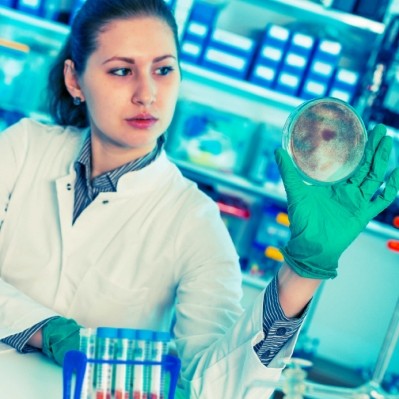Special Edition: Feed Technology
Feed mill updates focus on efficiency and computer tracking

The new technology brought in during a now-completed, almost $800,000, update included a new mixer, a new automation system and a micro-ingredient system, said center officials. Funding for the project came from the North Dakota Legislature, regional groups and the feed equipment industry.
“We took our system from the 20th century to the 21st century,” said Kim Koch, manager of NCI’s Feed Production Center. “There are a lot of smaller to medium companies that are doing the same – improving efficiencies by saving on energy and time.”
The new equipment also means it can be easier to track or trace ingredients that may have contaminants, or harbor biological and chemical risks, he told us. “Other upgrades to equipment would be things that help you identify the safety of the ingredients that you’ve received, or allow you to introduce kill steps, so if you get an ingredient that’s known to carry a biological pathogen or chemical contaminate, you could render the pathogen or chemical contaminate to safe standards or eliminate it,” he added.
“A lot of those upgrades, especially on the tracking and safety side, they’re computer upgrades,” he said. “What kind of information you’re gathering and tracking, the computer keeps track of it and gives a daily or weekly report.”
The center now uses a Repete computer system and has a hammer mill, two pair roller mill and pellet mill with a custom steam condition, said officials.
Hands on work
Some of the changes mean that students have moved from more hands-on work with the machinery involved in feed production to working through a computer interface, said Koch.
“It’s all pretty much enclosed, so hands-on is human-machine interface,” he said. “If there’s a problem and you need to fix it, you have to be able to go in the software and fix it.”
However, said Koch, that doesn’t mean that students don’t have to understand how each part of the feed manufacturing process works, how each machine works and what each machine is supposed to do.
“But you want to make sure the students understand what we do, how we do it and why we do it,” he said. “What’s changed is, instead of pushing buttons, or doing it manually, we’re using a keyboard, or tablet or we’re 25 miles away.”
The center also is now able to train students to use micro bin systems and a four-bin tote system so different ingredients can be mixed and tracked at the same time, he said. The changes make mixing a more efficient process as older systems could have built in delays to account for mixing time.
“Most of the advances are driven by, ‘How do we make large quantities of feed in the available time?’” he said. “You can’t make more time.”
Many of the advancements come back to computer programs and technology, said Koch. The master computer tracks the ingredients and operates a check and balance system.
And, students can run computer-based training simulations outside of the feed mill, he said. Students can run simulated programs or learn how to manage errors in the system.
There also have been some other adjustments made to incorporate the new technology, he said. These include work like slowing down the discharge from the new mixer to match the rest of the production system.
“We have a really nice mixer and it was the same size [as the previous one,] but its discharge facility was three times faster,” he said. “We couldn’t discharge that quickly.”
Looking forward
However, Koch said, the completed upgrades don’t mean that everything has been addressed. Given an unlimited budget, he said, there would be a few more items to address.
On the list would be a new pellet press system through the coater, he said. The one the facility currently uses still works, but it is small and was manufactured in 1957.
“The longevity of the system is great, but it’s [like] an old air plane,” he said. “Our mission here is to educate people and to try and help discover new ways to use equipment.”









